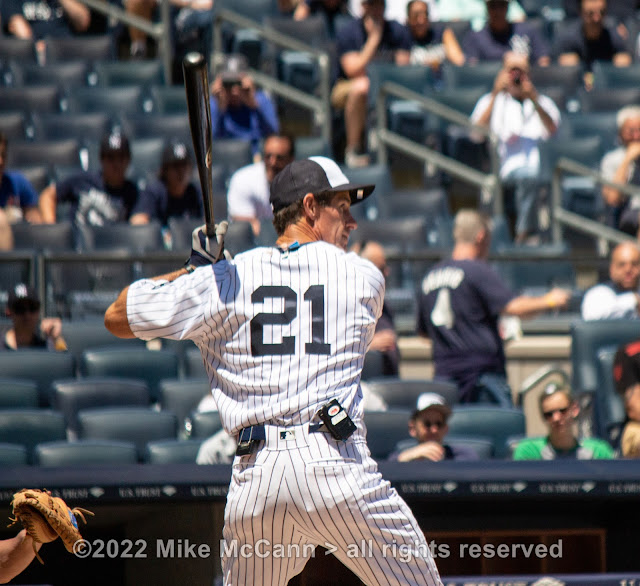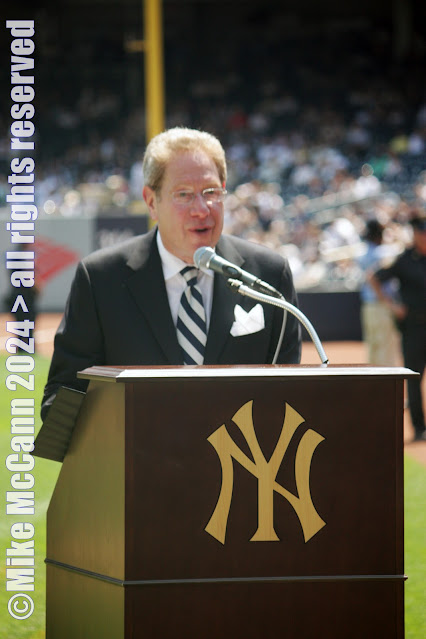If Your Birthday is February 25th...
...you share it with Paul O'Neill, who flipped an invisible switch once the Reds traded him to the Yankees, elevating his game and becoming a cornerstone player on four World Series championship teams. Tenacious all-out play earned him the Bronx faithful's forever affections, along with the nickname The Warrior from George Steinbrenner. O'Neill's keen insights and dry wit have led to a just-as-successful second Yankee career as their lead analyst on TV. In fan-friendly move, the Yanks announced that they will retire his number 21 this August.
Jorge Soler, the Cuban expat slugger who, after struggling to earn an everyday job with the Cubs, developed into a steady middle-of-the-lineup presence with the Royals -- and then reached his peak after a mid-season 2021 trade to the Braves, where he blasted three World Series homers, including a mammoth shot in the clinching game six, to earn Series MVP honors. Unsigned before the lockout, he could be one of the most in-demand free agents once the labor issues are solved.Ken Dayley is another example of a player who struggled with his original team, but flourished after being traded. The lefthander never caught on as a Braves a starting pitcher, but became a valued reliever on the Cardinals 1985 and '87 pennant winners.
Ed Lynch was a swingman on the pitching staffs of the Mets and Cubs during the 1980s. After his playing career ended, he earned a law degree and returned to the game as a scout, before serving as Cubs' GM from 1994-2000.
Cesar Cedeño arrived in the majors at age 19 with huge expectations. Showing huge promise when he joined the Astros in 1970, he then received a massive compliment when Leo Durocher, taking over as manager two years later, favorably compared him to a young Willie Mays. While Cedeño never quite reached that level, he was a solid contributor with Houston during the '70s and the Reds during the early '80s. His final blaze of glory came during a sizzling stretch run with the '85 Cardinals, where he helped keep the offense afloat, batting .434 after Jack Clark and Vince Coleman were injured.
And we remember a pair of Hall of Famers:
Ron Santo, the brilliant 3rd baseman of the 1960s Cubs who waited far too long for induction in Cooperstown. This nine-time All Star and four-time Gold Glove winner was a constant along with Ernie Banks and Billy Williams as the Cubs returned to contention from 1967. He's among the Cubs legends honored with statues just outside Wrigley Field.
Monte Irvin, one of the greatest high school stars ever in New Jersey made his mark across the Hudson as the first Black star for the New York Giants. A terrific outfielder, Irvin mentored Willie Mays while finishing third for NL MVP in 1951. his big league numbers could have even been greater -- Monte spent his first nine pro seasons with with Negro League's Newark Eagles. After working in marketing with Rheingold Beer and scouting for the Mets, he joined the Commissioner's office. In 1974, he, not Bowie Kuhn, represented MLB when Hank Aaron became baseball's all time home run champ.






Comments
Nearly two years earlier on July 17, 1947, Thompson was the first black player for the St. Louis Browns. A black teammate, Willard Brown, made his debut two days later. But it was an experiment to see if it would boost attendance for the moribund Browns. When it failed to produce the desired results, Thompson and Brown were released a month later. Both returned to the Negro League. Brown was 32 and never returned to the majors, but Thompson was only 21 and the Giants acquired him before the start of the 1949 season.
Irvin didn't enter the game until the 8th inning when he pinch hit for pitcher Clint "Floppy" Hartung (the phenom who was supposed to be the two-way pitcher and power hitting outfielder like Shohei Ohtani but was a huge bust).
When Thompson batted in the first inning, it was the first time in major league history that a black batter faced a black pitcher. Don Newcombe started that game for the Dodgers. There were five black players in the box score for that day, four who started. Jackie Robinson started at second base, batting cleanup, and Roy Campanella was the starting catcher, batting eighth.
Thompson was the only player to break the color barrier for two teams. And although he mostly played infield, when Don Mueller broke his ankle in game 3 of the NL playoff in 1951, Thompson, Irvin and Willie Mays became the first all black outfield in a World Series game.
Best of all, the Dodgers won the game on 7/8/49, 4-3.
https://www.retrosheet.org/boxesetc/1949/B07080BRO1949.htm
I have some earlier posts with Wrigley photos. Click below to enjoy these:
https://mikemccann.blogspot.com/2008/01/sunsplashed.html
https://mikemccann.blogspot.com/2015/12/wrigleyville.html
https://mikemccann.blogspot.com/2015/10/the-name-is-murphy.html
https://mikemccann.blogspot.com/2008/12/battling-baseball-withdrawal.html